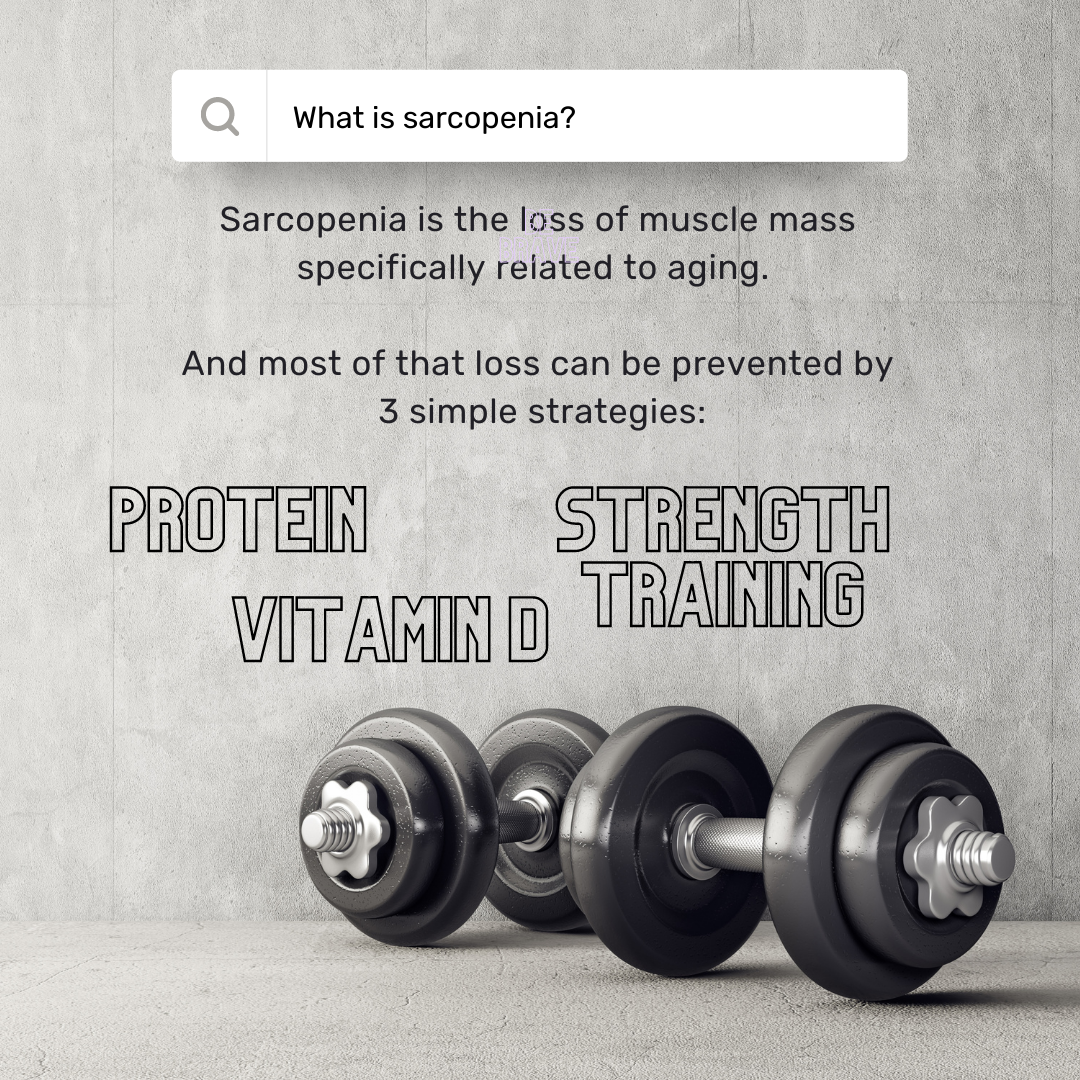What is Sarcopenia and How to Prevent It
Sarcopenia is the loss of muscle mass specifically related to aging. It's normal to lose some muscle mass as we age, but most of this loss is preventable. People with sarcopenia often experience weakness and decreased stamina, which affects their ability to carry out daily activities. A reduction in activity leads to further muscle mass loss. Decreased muscle also affects metabolism (slows it down) and is associated with increased body fat. Muscle loss starts around the age of 35, unless we do something about it (key is to stay active).
According to a 2019 study (referenced below), sarcopenia can be reduced by diet and resistance training:
Protein
Consuming enough dietary protein directly signals muscle tissue to grow and strengthen. The ability to digest and absorb protein decreases as we age. It’s important to monitor protein intake and ensure you are consuming enough. If you are not consuming enough dietary sources of protein, the study recommends that protein shakes are an excellent alternative. The American College of Sports Medicine (ACSM) recommends 1.2-1.7g of protein per kg of body weight. I always recommend to aim for the higher amount as new studies show more protein may be better. For example: I weigh 128lbs, so I need a minimum of 98g of daily protein.
Vitamin D
Vitamin D is an important hormone in cell management. Vitamin D deficiency is related to sarcopenia; however, the exact reason why is not particularly clear. More research is required to investigate the correlation between the two. Another supplement that aids in muscle growth and lowering inflammation is omega-3 fatty acid.
Resistance Training
Cardiovascular training is important to strengthen the heart and lungs, and resistance training is most beneficial to increase balance, coordination, strength, stamina, and muscle mass. If your goal is to build your body strong and resilient resistance training 2-3 times weekly needs to be a priority. Pilates apparatus uses springs and body weight to create the resistance needed to challenge muscles. Study indicates that resistance training can also help balance your hormone levels and improve the ability to turn protein into energy in older people.
Here is a great illustration of MRI imaging of thighs demonstrating that if you don't use it, you lose your precious muscle:
In this very important study (referenced below), they discovered that constant exercise over one’s life preserves lean muscle mass. This is so amazing because it contradicts the common observation that muscle mass and strength decline is a function of aging alone. Instead, these declines are probably the effect of disuse rather than muscle aging. This study demonstrated that maintenance of muscle mass and strength may decrease or eliminate falls, functional decline, and loss of independence that are commonly seen in aging adults.
While there are several variables to consider when building muscle (such as metabolic stress, mechanical stress, and muscle damage), a key part is to make sure the exercise is challenging enough that your muscles go to near failure, where you finish your set when you feel like you can only perform 2 more reps with good form. You can use time (keep going until you reach fatigue) and/or load (increase the heaviness of the weight).
In the above video, I demonstrate three styles of training we use to resistance train our muscles here at Pilates Life.
Using strengthening hamstrings (back of the thigh) as an example:
First 10 seconds clip is in our Pilates Equipment sessions: a reformer supine single leg bridge.
Second 10 seconds clip is in our Sculpt sessions: kettlebell traditional deadlift.
Third 10 seconds clip is in our Barre sessions, using a compound movement: medium mini loop band single leg deadlift with a single arm row.
Here at Pilates Life Studio we implement evidence-based science to all our sessions, considering all variables to appropriately challenge muscle within each client’s current level of ability. Trust you are in very good hands here at the studio!
Resources:
https://www.healthline.com/health/sarcopenia
Gao-Balch Y, H. “Sarcopenia Reversible by Diet.” Diabetes Updates, vol. 5, no. 4, 2019. DOI.org (Crossref), https://doi.org/10.15761/DU.1000133.
Wroblewski AP, Amati F, Smiley MA, Goodpaster B, Wright V. Chronic exercise preserves lean muscle mass in masters athletes. Phys Sportsmed. 2011 Sep;39(3):172-8. doi: 10.3810/psm.2011.09.1933. PMID: 22030953.





